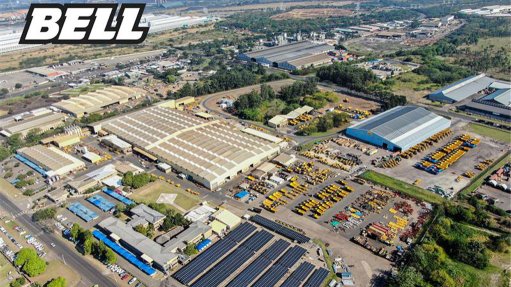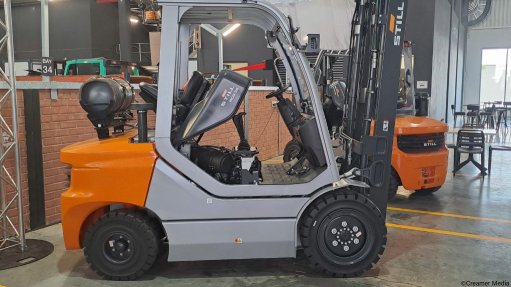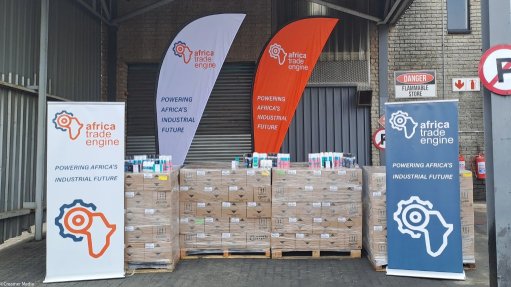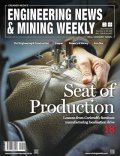There is no blanket solution in NUE
This article has been supplied.
By: Dr Louis Ehlers - Manager of Nutriology Solution Development at Omnia
In agriculture, no two farms are the same – and neither are their nutrient requirements. Each farm, each field, and each season presents its own set of variables. Applying a blanket fertiliser strategy, without considering these variables, risks wasting inputs, lowering yields and, in some cases, damaging soil health.
This is why an individualised, science-led approach is the only effective way to improve nutrient use efficiency (NUE) and help farmers reach their yield and sustainability goals. It’s also central to Omnia’s purpose of innovating to enhance life, together creating a greener future, where tailored, technology-enabled solutions are key to advancing agricultural progress.
Start with the most limiting factor
When it comes to nutrient management, a grower’s most limiting factor should guide all nutrient decisions. Whether that factor is soil acidity, moisture availability, crop growth stage or climate risk, it sets the ceiling on potential yield. If that constraint isn’t addressed, adding more fertiliser won’t solve the problem – and may make it worse.
A case in point: we recently worked with a dryland maize farmer in the western Free State whose yields were declining despite increasing nitrogen applications, particularly urea. Our soil analysis revealed that prolonged heavy use of urea had significantly acidified the deeper soil layers, limiting nutrient uptake. The solution wasn’t more fertiliser – it was better source of fertiliser, applied differently. We shifted to ammonium nitrate-based products and restructured the fertilisation plan into a phased programme with pre-plant and top-dress applications. Not only did this restore balance in the soil, but the farmer achieved a substantial yield increase while using less total fertiliser.
Trust science, not assumptions
The approach should begin with a thorough understanding of the grower’s context – including their fertilisation history, cropping sequence and management capabilities. It is vital to take detailed soil samples to assess both chemical and physical properties, and analyse crop requirements based on growth stage and seasonal outlooks.
From there, we design a nutrient application strategy that may vary by field, depending on soil conditions, crop type and equipment availability. In irrigated systems, our Omnia Fertilisation Optimisation System (OFOS) helps farmers integrate nutrient applications seamlessly with irrigation cycles. In rain-fed conditions, we generate variable-rate nutrient maps using a combination of soil data, historical yield data, and seasonal climate factors.
Using tech to drive precision
Technology plays a central role in tailoring fertilisation strategies. We work on multi-year cycles with many of our clients, using harvest data to determine nutrient removal rates and adjust future applications accordingly. Remote sensing and NDVI imagery help identify stress areas during the season, while leaf sampling provides additional insights into plant health and nutrient uptake.
Latest advancements now allow one to determine real-time nitrogen requirements weeks after crop emergence. This is especially valuable in crops like maize, where adjusting nitrogen mid-season can dramatically improve results. For crops without established nitrogen models, field zones and leaf analysis still allow us to fine-tune nutrient applications during the season.
Feet on the farm: the value of partnership
Technology and data are only part of the solution. Long-term improvements in NUE require continuous engagement between the grower and the agronomist. That’s why it is critical to prioritise ongoing and consistent on-farm support – not once-off advice.
Omnia’s agronomists guide farm visits to focus on emerging issues, provide weekly feedback during critical stages, and conduct post-season reviews to track performance and refine strategies. This ongoing partnership means problems are picked up earlier and solutions are more targeted.
Another emerging opportunity for improving NUE is the integration of biological products such as biostimulants. These enhance plant root development and nutrient uptake, increasing the effectiveness of applied fertilisers. Incorporating biostimulants into a broader nutrient plan offers a sustainable way to boost productivity while reducing dependency on high volumes of synthetic inputs.
Nutrient use efficiency is not just about reducing waste – it’s about unlocking yield potential, improving profitability, and protecting the long-term viability of the land. By focusing on the grower’s specific challenges and opportunities, and taking a science-led approach, we bring innovation to the farmgate – empowering farmers to achieve more with less. It’s a commitment that sits at the heart of our Nutriology model and reflects our purpose-driven approach to advancing sustainable agriculture.
Article Enquiry
Email Article
Save Article
Feedback
To advertise email advertising@creamermedia.co.za or click here
Comments
Announcements
What's On
Subscribe to improve your user experience...
Option 1 (equivalent of R125 a month):
Receive a weekly copy of Creamer Media's Engineering News & Mining Weekly magazine
(print copy for those in South Africa and e-magazine for those outside of South Africa)
Receive daily email newsletters
Access to full search results
Access archive of magazine back copies
Access to Projects in Progress
Access to ONE Research Report of your choice in PDF format
Option 2 (equivalent of R375 a month):
All benefits from Option 1
PLUS
Access to Creamer Media's Research Channel Africa for ALL Research Reports, in PDF format, on various industrial and mining sectors
including Electricity; Water; Energy Transition; Hydrogen; Roads, Rail and Ports; Coal; Gold; Platinum; Battery Metals; etc.
Already a subscriber?
Forgotten your password?
Receive weekly copy of Creamer Media's Engineering News & Mining Weekly magazine (print copy for those in South Africa and e-magazine for those outside of South Africa)
➕
Recieve daily email newsletters
➕
Access to full search results
➕
Access archive of magazine back copies
➕
Access to Projects in Progress
➕
Access to ONE Research Report of your choice in PDF format
RESEARCH CHANNEL AFRICA
R4500 (equivalent of R375 a month)
SUBSCRIBEAll benefits from Option 1
➕
Access to Creamer Media's Research Channel Africa for ALL Research Reports on various industrial and mining sectors, in PDF format, including on:
Electricity
➕
Water
➕
Energy Transition
➕
Hydrogen
➕
Roads, Rail and Ports
➕
Coal
➕
Gold
➕
Platinum
➕
Battery Metals
➕
etc.
Receive all benefits from Option 1 or Option 2 delivered to numerous people at your company
➕
Multiple User names and Passwords for simultaneous log-ins
➕
Intranet integration access to all in your organisation


















